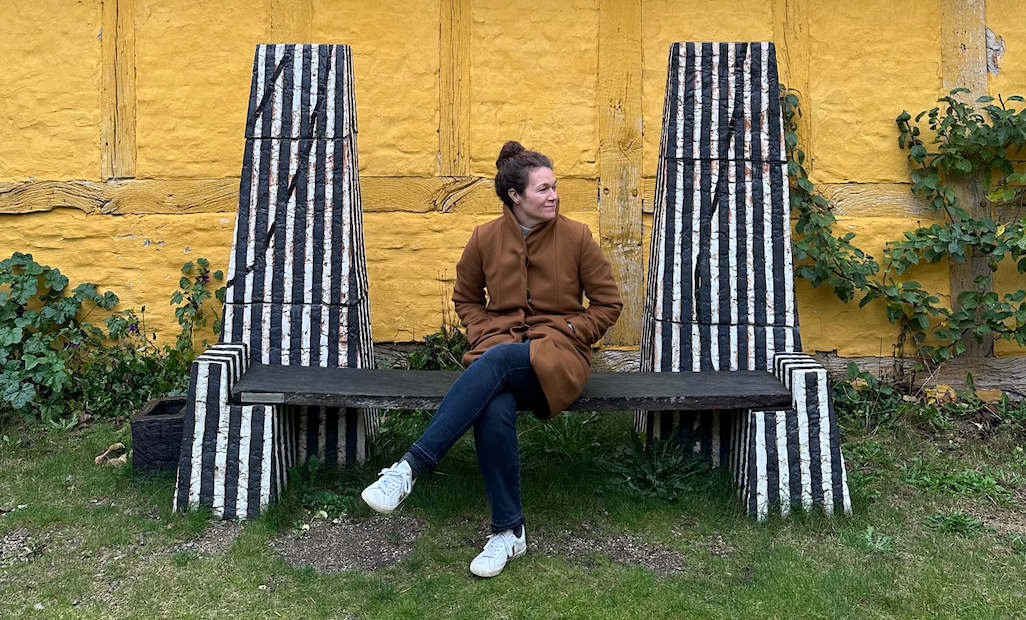The 50 States Project is a series of candid conversations with interior designers across the country about how they’ve built their businesses. This week, Waterbury, Vermont–based designer Brooke Michelsen tells us about the serendipitous circumstances that led to her founding her firm, why switching from hourly billing to a percentage-based model has given her more freedom, and how she guides her clients away from retail and toward custom local production.
What inspired you to launch your design business?
I worked for a few firms out of school, then got a job in New York for a well-known interior designer, Stephen Shadley, and I worked for him for many years. I loved that position, and I loved the firm—it was a very nice, family-like setting—but eventually I just did not want to live in New York anymore. I’m from Vermont, and as a young person I never thought I would want to live in Vermont again, but I was coming up here on weekends as I got older, and I’d [find myself] back in the city, wishing I was there instead. In 2013, I left Stephen’s office, moved up here and took a small pause.
Was it just to catch your breath, or did you think you might leave the industry?
I was definitely thinking, “Do I really want to keep doing interior design?” Because it’s a lot. It’s intense—I mean, all of my professors at design school were teachers because they had left their design businesses.
When I moved up here, there wasn’t really anybody with a studio that aligned with my aesthetic. I was helping another firm on a contract basis, but I knew I didn’t want to be an employee there—they wanted me to [come on full-time], but I didn’t love the corporate feeling of the office, where you walk in and there’s 30 people sitting at computers clicking away. For me, that’s basically walking into death. At the same time, I was getting headhunted back to New York for some great positions—and I almost did it! My friends from the city were visiting one weekend in October, and I remember them waiting in the car for me while I did this interview, and then we went on this six-mile hike together and talked about the opportunity. I was like, “Do I go back to this cool job in New York, where I get to travel to Denmark all the time to develop a furniture line, and where I’d make more money than I ever thought I was going to make in my life? Or do I stay here and start my own thing?” And all of them were like, “You moved back up here for a reason.”
There was this one architecture firm nearby whose work I liked, and my friends encouraged me to connect with them. So I reached out to see if they hired interior designers, or if they felt that this region would be open to my more contemporary aesthetic if I started my own firm. I met with the principal there—who is now my husband—and he was like, “Don’t go back to New York. There’s no one doing what you do here. We need you here.” He explained that he had a hard time hiring a designer for the type of work they were doing, and said, “Just start your own thing and I’ll give you work right away. You can even move into our office and use our AutoCAD—whatever you need to get yourself started.” So I decided to go for it.
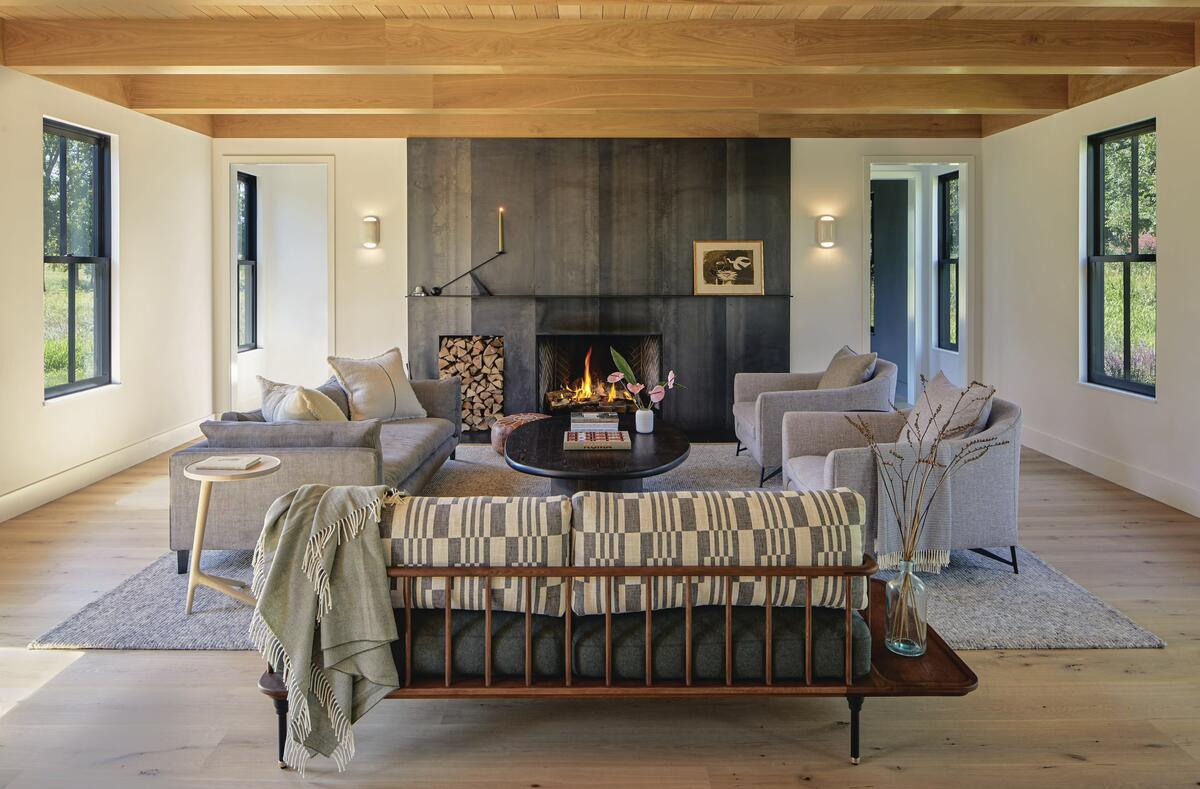
How did that professional relationship help you get your business going?
I started with one very small addition to a New Hampshire house through a friend of a friend, and then my husband—again, not my husband at the time—gave me little bits at first, and then a pretty big project. I mean, I earned it: I had to interview for it, and I had my own contract with the client. And we kept going like that. Within a few months, we were dating. And then not even a year into it, I was pregnant with our first daughter. We got married a couple years after that, then had our second daughter. And through all that, we just kept [working together].
I had my kids in 2015 and 2018, and I wasn’t trying to grow [my business] while they were little. I wanted to stay small and manage everything on my own without having to take on an employee. But it got to a point where it was just too much work, so I hired a designer in 2021. I hired another full-time designer two years later, and then a part-time office manager. That first hire has recently moved on, so now we’re looking to hire someone else.
What are you looking for from a team member today?
At first I was mainly looking for someone to take the drawing off my shoulders. But that person had to have other skill sets as well, because it didn’t make sense to have a full-time draftsperson—I needed that person to be able to order all the furniture and the fabrics. I met someone who had reached out to my husband looking for a job; after he forwarded her to me, we took a hike together and talked, and then I hired her.
My second hire was a designer with a master’s in architecture. She’s a great fit aesthetically, and she’s such a hard worker. Looking back, I think my mistake was hiring a second expensive person, because then I had two big salaries to pay—but then again, I’m so glad I hired her because she’s such a great fit. As I’m looking ahead to my next hire, we may still need another person who’s multifaceted. It’s so hard to hire someone who only does one thing, because you’re never only drafting, you know?
Totally—it’s a mix. What does your business look like today, and how are clients finding you?
Most of it comes through my husband’s firm, because now he’s like, “I won’t work with any [interior designer] but her.” And not because he’s trying to give me work, but because I’ve earned it. He’s in a place where he has me and a landscape architect he likes, and he’s able to say, “These are the other people who are working on this project.” I still go through an interview process, but I get the job almost every time. Other than that, I have a few people who have found me on social media.

What is the ideal project load for your team right now?
I have no idea. It used to be like five projects when it was [one other employee and me], and that was pretty hard to stay on top of. Right now, we have 13 projects, and it’s intense. I think 10 would be a good number if I had one more person; if I don’t have one more person, we have to be down to around six.
When I worked for Stephen, there were five of us, and if we had five projects, it was like, “We’re never going to be able to do all of this.” It’s so much more work than people think. We don’t just decorate people’s homes: We’re going from the ground up, so pretty much everything is new for us—and I’m very picky about things like HVAC grilles, or [doing] an electrical walkthrough. So having one more person can make [such a difference]. You can really see the work [more clearly].
Do you see hiring as a path to growth, then?
I feel like I’m still so new to having employees, and I want to be a responsible boss. I worked at a lot of places where you had no 401(k), and it was very loosey-goosey. So I established [benefits and] a 401(k) plan for my employees as soon as I could—but those things are expensive. Having employees in general is really expensive, especially in this state. It feels like there’s no help for small businesses. And right now, our team is all women, who ask about things like maternity leave—and you want to give it to them, but it’s like, “Can you take the time off and not get paid?” Yes, certainly. But can I definitely give you your four months of pay? I don’t know. I have to be honest, with them and with myself, about that stuff.

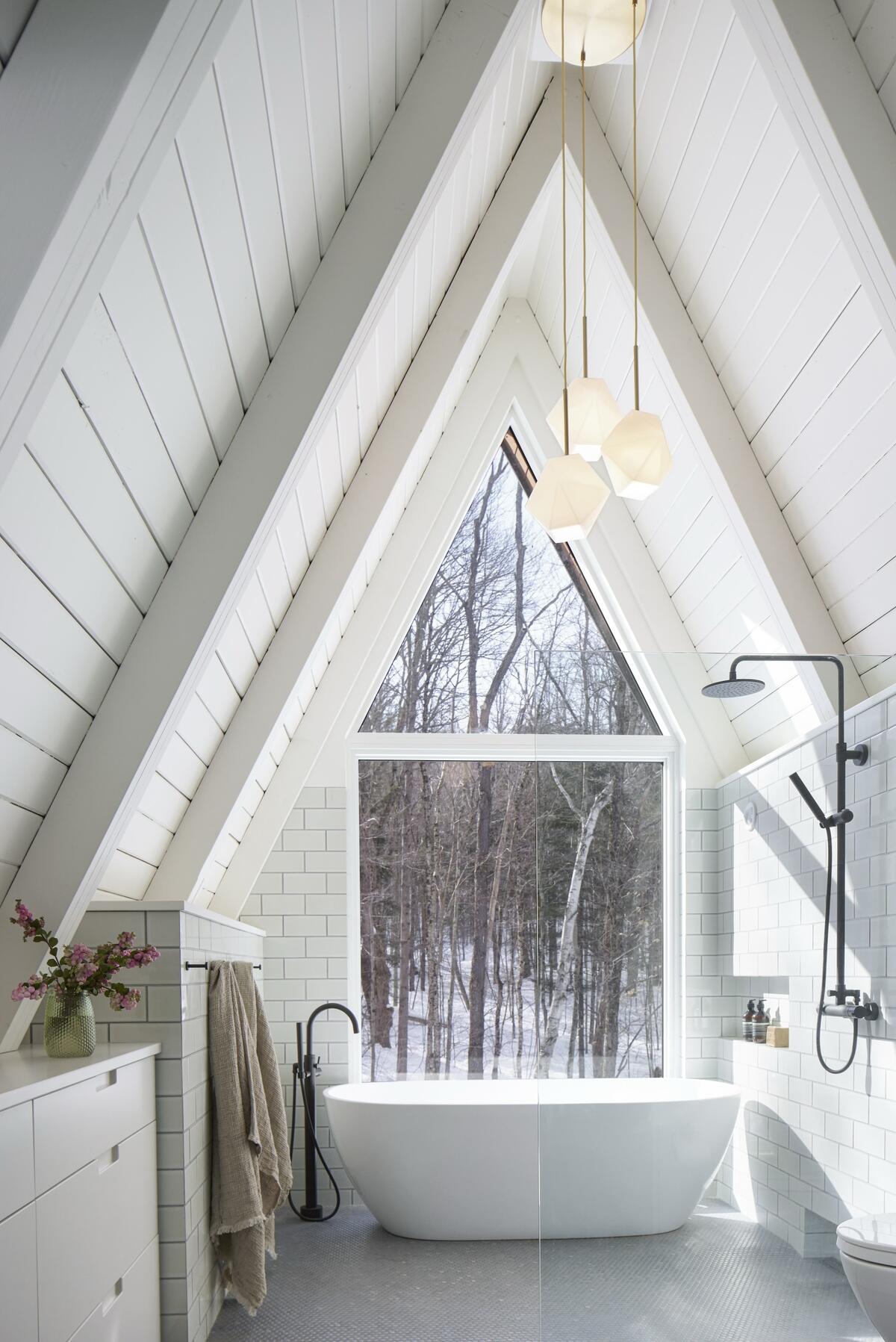
How have you approached billing for your work?
I followed the model of Stephen’s firm, which was an hourly fee and then a percentage. Except mine were much lower because I wasn’t a famous New York interior designer. I was chicken at first, and I just charged the most I thought I was worth.
Over time, I started upping my hourly—and eventually I realized that I couldn’t up my rate anymore. It was like, “This is getting a little bit ridiculous.” And I hate tracking hours—I mean, I really hate it. It adds so much time, and nobody’s actually good at it. I felt like we were losing money because we were all so bad at tracking hours. So I said, “Well, what are these projects worth?” We started looking at square footage costs of a building and how to charge by the square foot. But then we just took the architect’s model of billing instead: If the project costs this much, we’re charging this percentage, and we’re going to bill it to you in four phases of construction, and then you’re paying a fee on purchases. That’s how we’ve built it out.
Has that brought you a better, steadier cash flow and profit?
It’s much more lucrative, but I also think it’s fair to what we’re actually doing—we were definitely cutting ourselves short before. And at the same time, clients like [our new approach] because it’s a known number. If a project is going to be $5 million, they know what our percentage is, and that that much money will be coming to us over four phases. We bill half of that at the beginning of the phase and half at the end of the phase.
That’s something I learned along the way. We used to bill [only] at the end of each phase, but some of these phases take upwards of five months—I can’t do that! I need half of it upfront so we can keep everybody here paid. For us, that’s the best way to make it work.
How does scope creep impact the rate you’ve quoted to the client?
With architects, it’s a moving target, right? If it was a $5 million house but now it’s $7 million, they’re billing you the percentage on $7 million. But even architects sometimes get locked in [at a specific rate]. While I’ve been developing this, I’ve been a lot more welcoming to [a fixed fee based on the percentage of the initial scope] if somebody asks for it, because I am also still learning what works best.
I also cross-reference my rate with square footage costs, and with what we were billing hourly—it’s funny, because it all does kind of pan out to be the same. It’s just that it’s more of an even cash flow, like you were saying, rather than the heavy months and light months you get with hourly billing.
Has it changed the way that you interact with clients, or the kinds of conversations you’re having about money?
This is embarrassing, but we don’t have a lot of those conversations. I don’t know if it’s just because we have these high-end clients, but I feel like there’s a lot more talking about the financials on the architecture side. I try to get a budget out of people, but almost no one ever gives me one. Or sometimes they’ll ask us to build a budget—in those cases, we go room by room, and we give them a range of approximately what it will cost. At one end, everything’s expensive and custom; we also show them what it would be if we mix it in, somewhere in the middle, or if everything was ready-made. Pretty much everyone just goes to the mid-to-higher end, with maybe a few guest rooms that get stuff from shops that aren’t quite as expensive.

What is it aesthetically that you were bringing to your marketplace that didn’t exist in Vermont?
There are plenty of good designers here, but I was not looking to do the mountain aesthetic or the Vermont farmhouse look. I came from a firm that was very high-end, and my work is a little more tailored—it’s still modern or contemporary, but it’s not stark and cold. And even though we have a pretty strong aesthetic, our projects are all very different. I didn’t want to be doing the same thing on repeat. The more that we’ve grown over the years, I also get to design a lot of furniture, which I really love. When I get to do that in a house—sometimes I’ll design five or six pieces—that’s really exciting for me.
When you look ahead, where do you see the most opportunity for growth?
We’ve been getting more and more requests outside of Vermont. There’s a lot of money here, but people are often very conservative with it. As we do more work in other places, I’m looking forward to getting clients who want something full-on, because it’d be nice to really go for it on a project where the budget doesn’t [even] come up.
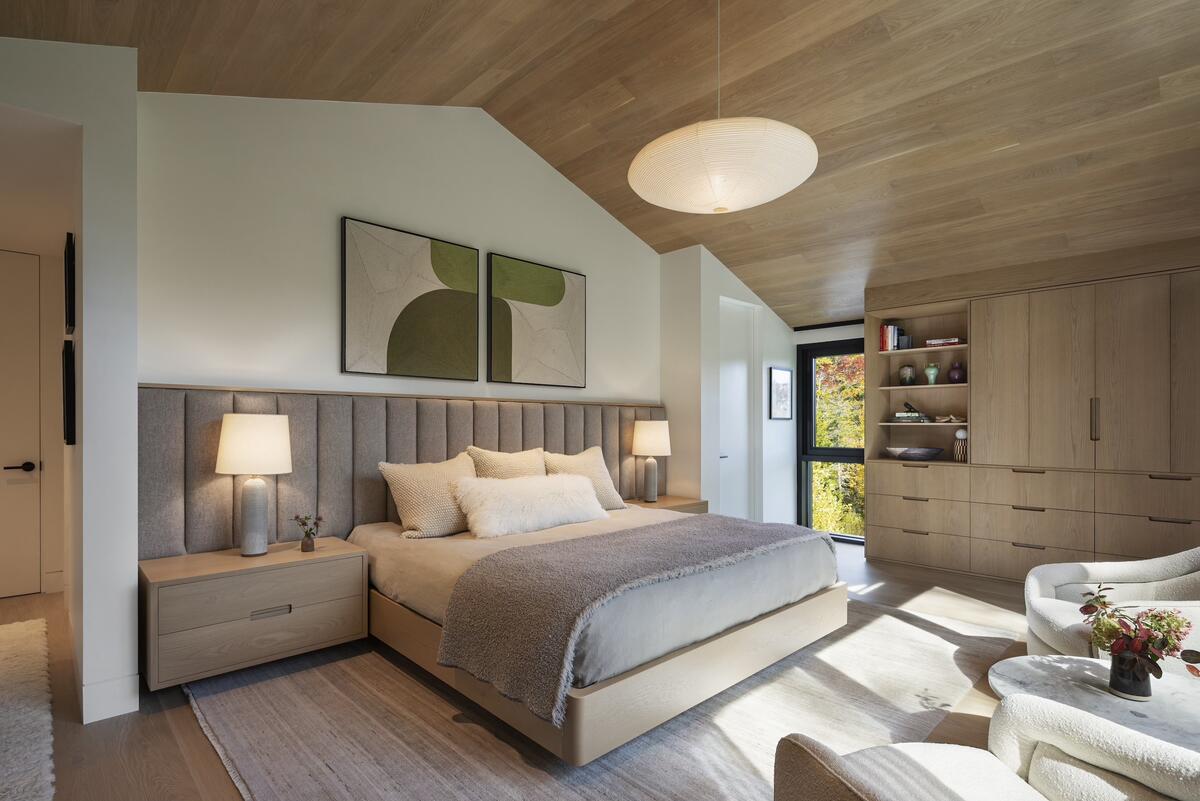
How do conversations about budget hold you back in your work today?
Sometimes things get rejected for their price, where [the client] will look at a sofa and say, “Oh, wow, I’m not going to spend $50,000 on a sofa. Is there anything for $30,000?”
How do you navigate that? Is there any way to get people to open up to something more bespoke?
We will show something that is respectful of budget alongside something that blows it out, and we talk to them about that. A lot of time they’ll go for it because they’re like, “That is more interesting.” And not only that—20 other people don’t have it, you know?
When clients want something from a retail store, I’ll say no. I think it’s important to utilize not only our skill set, but that of our local craftspeople, and to put money back into our local community. I want to make custom beds with our woodshop and our upholsterer. It’s usually a little bit more expensive, but we can be mindful of the cost as we design it and get them something unique.
Where else are you shopping?
I’ve always loved 1stDibs, so I tend to go there first. We have some specific brands and fabric lines that we like, and then there are a handful of local craftspeople who are doing a good job either designing their own things or making what we’re bringing to them. I feel like we have a lot in our pocket, but I’m also always looking—and this year, my full-time team member and I are going to go to Paris for Déco Off and to go to the flea market for the first time.
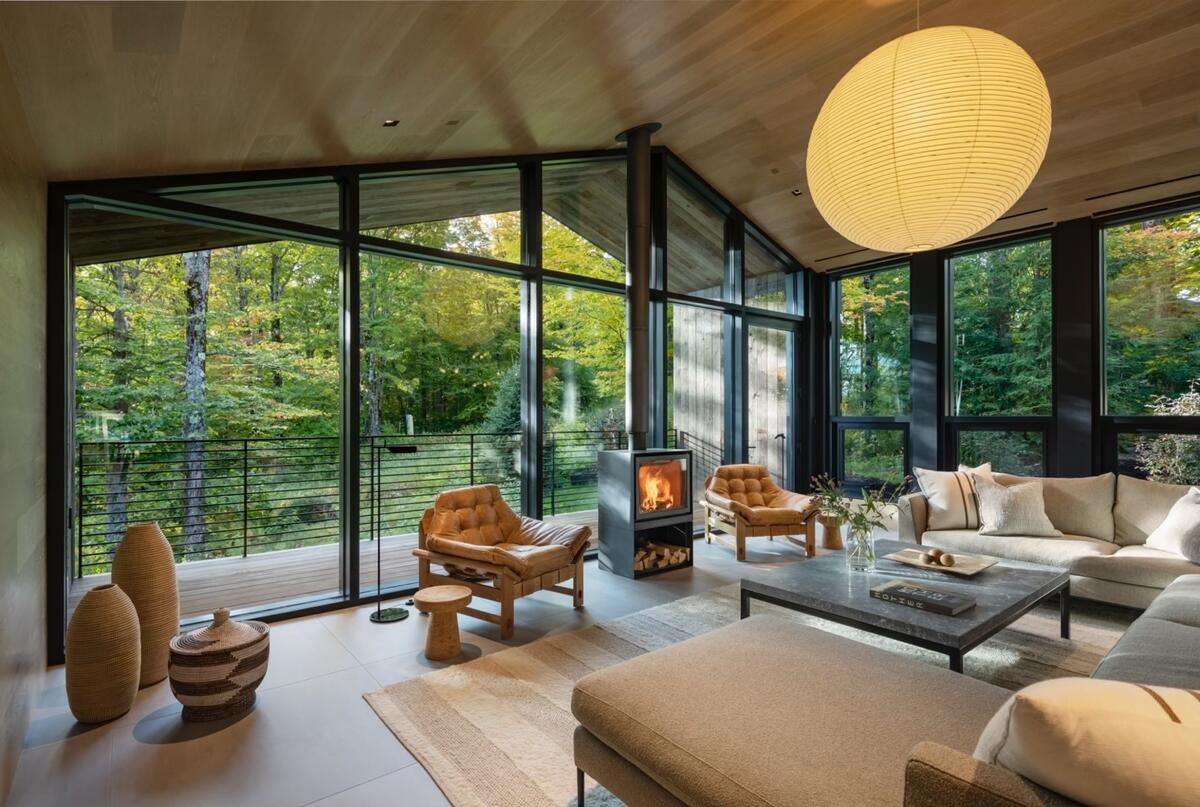
Is your business still located in your husband’s studio?
I was over there for years, and then I worked from home when the pandemic hit. As soon as it was good to come out of your house again, I came into town and rented a place nearby because I wanted to be able to take our kids to school and back and not have to go 20 minutes to the office. Now my whole life is a half-mile loop.
I’ve been here for the last three years, and I love the space, but I’m actually moving as we speak. For years, my husband and I watched this house that is adjacent to our home as it sort of fell apart, and we always thought, “If that ever goes for sale—” And then it did. My husband was out for a run one morning, and he came home like, “It’s for sale!” By noon, we owned it. So we have been renovating this old farmhouse for a couple years—we had to tear half of it down and throw it out because it was not usable, and then we maintained some of it, put it on a new foundation and renovated it. We’ve connected it with a bigger building, which will house my studio and an apartment for my mother and stepfather, who are moving here soon. It’s new, but it’s exciting.
Will you bring clients there?
It’s definitely for clients. Most of our clients are from out of town, so we invite them here once we get far enough along in the project—where we’ve worked for a long time developing palettes for the entire house—and they spend three or four hours with us. We’ve already done stone and tile selections and all that [during the architecture-heavy phase of the project], but then we’re selecting all the fabrics and furniture in one day.
That’s a lot!
Well, it sounds like one day, but it’s really months of going back and forth with furniture boards before that meeting. We’ve been sending them furniture digitally, so we’ve made those selections along the way. By the time they come here, we’re like, “OK, this is everything you’ve picked so far. Here’s the chair fabric, the sofa fabric, the rug and the drapery.”
By this time, we feel like we’ve nailed it. But the reason we ask them to come here for that one conversation is that if they’re not feeling something we’ve selected, we can just pull a few more out. We always have two options for them, and it’s rare that we need a third, but having a space so that we can go pull it out [is important].


What does success mean to you?
Other than the obvious of having some money in your bank account? I think people are afraid to say that, but when you work hard for it, you deserve it. Beyond that, success is feeling good about what we do every day—enjoying it and doing good work. I feel good to be in a place where I can provide a fun, happy work environment too. We’re all kind of goofy and open and relaxed around here, and it feels good to me that we’re not overly serious and stressed.
To learn more about Brooke Michelsen, visit her website or find her on Instagram.
















